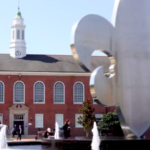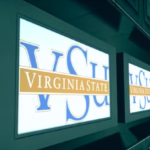Baltimore Public School Curricula Comes Up Short
And yes, the poor suffer most. “Shortly after joining the district, CEO Sonja Santelises wanted to find out what students were studying, the depth of their knowledge, and whether the content provided, as she says, ‘mirrors and windows,'” Leila Walsh of the Thomas B. Fordham Institute writes. “In other words, could students see themselves in the content? And did it give them opportunities to discover new things while relating those lessons to their own interactions with the world?”
“To help answer those questions, Dr. Santelises partnered with several experts, including David Steiner and Ashley Berner at the Johns Hopkins Institute for Education Policy. They conducted a district-wide curriculum audit that looked at what students would learn if they faithfully read all the texts assigned to them. Some of the findings were deeply concerning. For example, the texts contained very little information about certain important periods in history and various critical concepts in science.”
“Those gaps affect some students more than others. Children from affluent families are often able to acquire knowledge outside the classroom, but children from low-income families, children of color, and children whose first language is not English may not have as many of those opportunities.”




